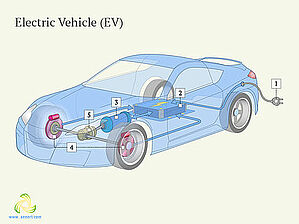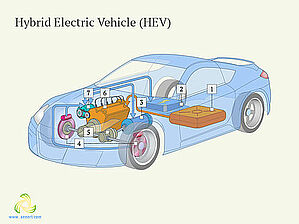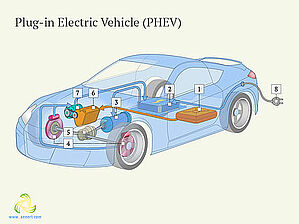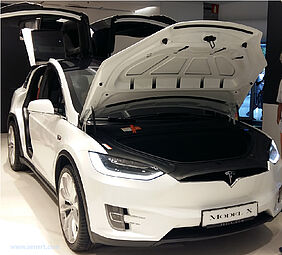Challenges associated with climate change stimulate the development of environmentally-friendly means of transport. The obvious importance of this development is underlined by the huge amount of direct CO2 emissions caused by fuel combustion in car engines which, according to IEA, account for almost 25%, with passenger cars in particular being the main culprits.
In December, Eurostat published statistics on International trade in hybrid and electric cars in relation to transactions with all countries outside of the EU (Extra-EU). Of course, strictly speaking, not all hybrid or electric cars can be classified as eco-friendly. The type of fuel used in hybrid cars must be taken into account, as well as the origin of the electricity for charging electric cars. Nevertheless, the dynamics of the vehicle supply in this class are of undoubted interest, both in terms of assessing markets and the prospects for environmental improvement. It should also be taken into consideration that Europe is the leader of this development in the world.
Eurostat presented for consideration two variants of hybrid cars – non-plug-in hybrid and plug-in hybrid. The main differences in the designs of these vehicles are presented in the illustrations below.


1. Power cord or Fuel storage 2. Lithium-Ion battery system 3. Electric motor 4. Regenerative braking 5. Transmission 6. Engine 7. Generator 8. Power cord
2020 was the most successful year for sales of eco-class vehicles, despite the coronavirus pandemic. Imports were up more than 6 percent and exports were up 4 percent from the year before in 2019. When comparing import and export data for 2020 with 2017, the results look staggering. For example, according to Eurostat "the value of imports of hybrid cars increased sevenfold and that of electric cars jumped 17-fold" and "...the largest increase in exports was for non-plug-in hybrid cars which was 24 times as high in 2020 as in 2017."
As the chart above shows, all three types of cars shown were exported from the European Union with increasing intensity in 2020, especially hybrid cars. Non-plug-in hybrid cars were the most popular for both exports and imports.
The leading supplier of this class of cars to the EU in 2020 was Japan, which accounted for 33%. Imports of plug-in hybrid and electric cars most often came from the United States. The main importer of eco-cars among the EU countries was the United Kingdom.
The data obtained indicate that environmental consciousness of vehicle users has experienced a major boost over the past three years. Of course, it is too early to talk about a complete solution to the problem of switching to eco-friendly vehicles. According to BloombergNEF, electric vehicle sales were only 3 million in 2020, but are projected to grow to more than 65 million by 2040. In 2019, 8.9% of energy used in transportation activities in the EU was renewable, with the general EU target having been 10% in 2020. However, in 2019, only four countries crossed this threshold – Sweden, Finland, the Netherlands, and Norway. It is likely that the dynamics of significant growth in demand for eco-class cars, as demonstrated by the results presented by Eurostat, will allow several more countries to reach their set targets.
